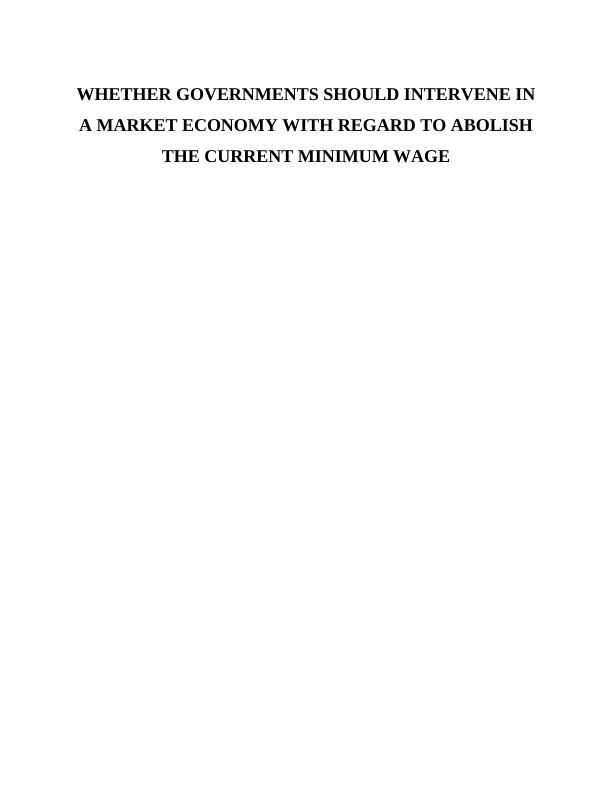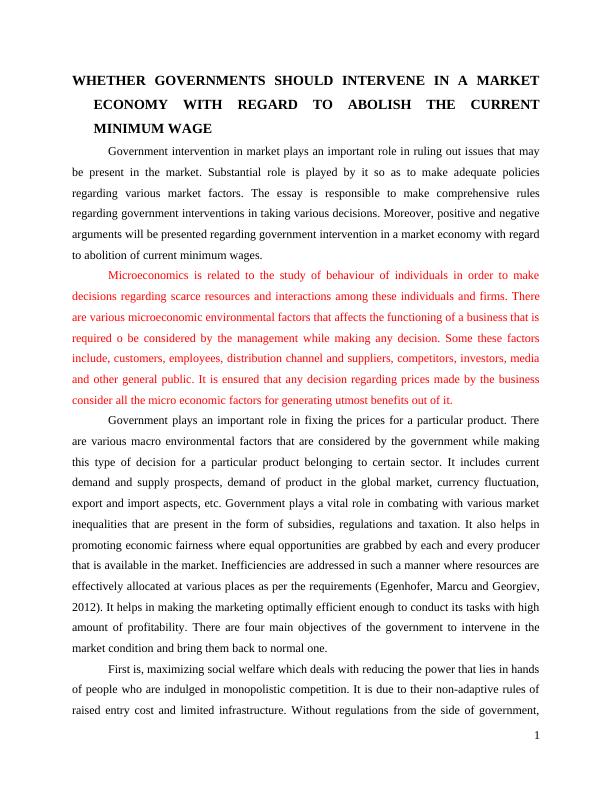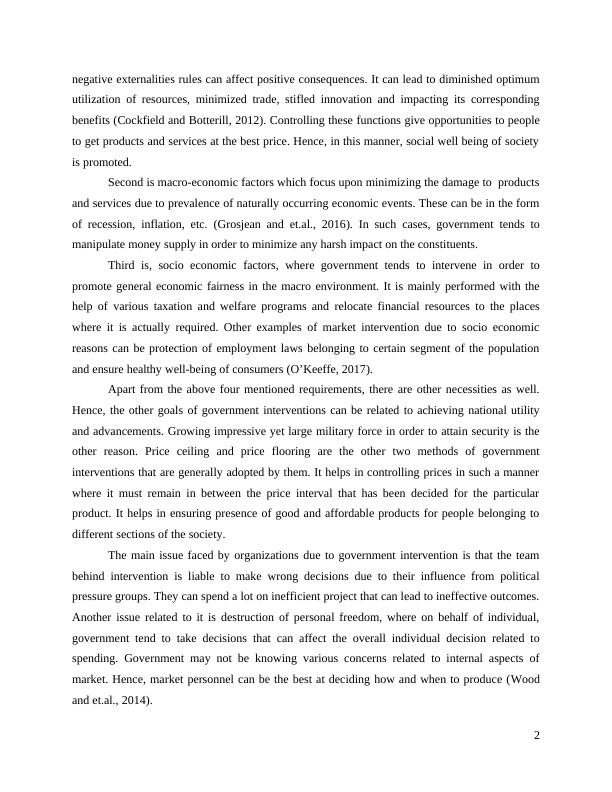Government intervention in market
Added on 2020-06-04
6 Pages1761 Words242 Views
WHETHER GOVERNMENTS SHOULD INTERVENE INA MARKET ECONOMY WITH REGARD TO ABOLISHTHE CURRENT MINIMUM WAGE

WHETHER GOVERNMENTS SHOULD INTERVENE IN A MARKETECONOMY WITH REGARD TO ABOLISH THE CURRENTMINIMUM WAGEGovernment intervention in market plays an important role in ruling out issues that maybe present in the market. Substantial role is played by it so as to make adequate policiesregarding various market factors. The essay is responsible to make comprehensive rulesregarding government interventions in taking various decisions. Moreover, positive and negativearguments will be presented regarding government intervention in a market economy with regardto abolition of current minimum wages.Microeconomics is related to the study of behaviour of individuals in order to makedecisions regarding scarce resources and interactions among these individuals and firms. Thereare various microeconomic environmental factors that affects the functioning of a business that isrequired o be considered by the management while making any decision. Some these factorsinclude, customers, employees, distribution channel and suppliers, competitors, investors, mediaand other general public. It is ensured that any decision regarding prices made by the businessconsider all the micro economic factors for generating utmost benefits out of it. Government plays an important role in fixing the prices for a particular product. Thereare various macro environmental factors that are considered by the government while makingthis type of decision for a particular product belonging to certain sector. It includes currentdemand and supply prospects, demand of product in the global market, currency fluctuation,export and import aspects, etc. Government plays a vital role in combating with various marketinequalities that are present in the form of subsidies, regulations and taxation. It also helps inpromoting economic fairness where equal opportunities are grabbed by each and every producerthat is available in the market. Inefficiencies are addressed in such a manner where resources areeffectively allocated at various places as per the requirements (Egenhofer, Marcu and Georgiev,2012). It helps in making the marketing optimally efficient enough to conduct its tasks with highamount of profitability. There are four main objectives of the government to intervene in themarket condition and bring them back to normal one. First is, maximizing social welfare which deals with reducing the power that lies in handsof people who are indulged in monopolistic competition. It is due to their non-adaptive rules ofraised entry cost and limited infrastructure. Without regulations from the side of government,1

negative externalities rules can affect positive consequences. It can lead to diminished optimumutilization of resources, minimized trade, stifled innovation and impacting its correspondingbenefits (Cockfield and Botterill, 2012). Controlling these functions give opportunities to peopleto get products and services at the best price. Hence, in this manner, social well being of societyis promoted. Second is macro-economic factors which focus upon minimizing the damage to productsand services due to prevalence of naturally occurring economic events. These can be in the formof recession, inflation, etc. (Grosjean and et.al., 2016). In such cases, government tends tomanipulate money supply in order to minimize any harsh impact on the constituents. Third is, socio economic factors, where government tends to intervene in order topromote general economic fairness in the macro environment. It is mainly performed with thehelp of various taxation and welfare programs and relocate financial resources to the placeswhere it is actually required. Other examples of market intervention due to socio economicreasons can be protection of employment laws belonging to certain segment of the populationand ensure healthy well-being of consumers (O’Keeffe, 2017). Apart from the above four mentioned requirements, there are other necessities as well.Hence, the other goals of government interventions can be related to achieving national utilityand advancements. Growing impressive yet large military force in order to attain security is theother reason. Price ceiling and price flooring are the other two methods of governmentinterventions that are generally adopted by them. It helps in controlling prices in such a mannerwhere it must remain in between the price interval that has been decided for the particularproduct. It helps in ensuring presence of good and affordable products for people belonging todifferent sections of the society.The main issue faced by organizations due to government intervention is that the teambehind intervention is liable to make wrong decisions due to their influence from politicalpressure groups. They can spend a lot on inefficient project that can lead to ineffective outcomes.Another issue related to it is destruction of personal freedom, where on behalf of individual,government tend to take decisions that can affect the overall individual decision related tospending. Government may not be knowing various concerns related to internal aspects ofmarket. Hence, market personnel can be the best at deciding how and when to produce (Woodand et.al., 2014). 2

End of preview
Want to access all the pages? Upload your documents or become a member.
Related Documents
Essay on National Minimum Wageslg...
|9
|2807
|373
Price Ceiling and Price Floor Mechanisms in Economicslg...
|12
|2447
|169
Role of Micro and Macroeconomics in Managerial Decision Makinglg...
|7
|1118
|275
Positive Externality and Government Intervention in Economicslg...
|13
|2666
|190
(Solved) Economics assignment PDFlg...
|14
|3150
|43
Economics for Business: Micro and Macroeconomics, Monetary and Fiscal Policy, Growth and Domestic Economic Policieslg...
|10
|2615
|364
